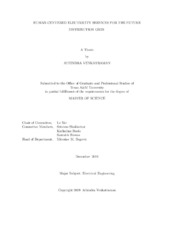| dc.description.abstract | The Distribution Grid across the world has been undergoing profound changes over the past decade. In developed nations, electrification of the transportation sector and integration of Distributed Energy Resources (DERs) has finally gained momentum. In emerging markets, electrification of rural areas brings to light the question of whether a ’centralized bulk transmission’ based solution would be the best fit. These ideas have only come under consideration primarily due to great strides in technological advancement coupled with the reduction in costs of such technologies. However, this massive transformation in the physical and technological aspects of the grid could directly conflict with existing business models and pricing strategies applied to the customers.
The main objective of this work is to propose a system where the implementation of these grid-edge technologies is in the interest of all parties involved in the energy ecosystem - utilities, retail energy providers, and the end-users. This proposed restructure of the utility business model is based on a shift in philosophy, from treating electricity as a commodity where the users are charged based on their volumetric consumption, to treating it as a service provided to the end-user by the utility company for a fixed customer-specific Grid Access Fee. It is designed for a deregulated wholesale and retail electricity market setting, like in Texas. This mechanism calculates the ’impact’ of a customer on the distribution grid by evaluating the customer on metrics that contribute directly to the costs incurred by the utility companies. Upon testing the new rate calculation mechanism against the old, it is observed that the distribution of bills for end-users is less centered around the mean, indicating that there are a few ’heavy-weight’ customers who cause the most impact to the grid, and some of the ’light-weight’ customers are overpaying in the existing scheme. Under the new scheme, the impact of customers on the grid is now more directly linked to the bill of that customer, thus aligning the customer’s incentives with that of the utility. The potential for additional human-centered grid services has also been illustrated. | en |


